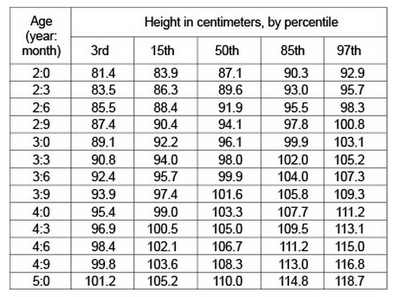题库 / GMATLA-MSR-38
Height-for-age
The World Health Organization (WHO) has produced a comprehensive set of growth standards for children. These standards are based on studies of children living in 6 nations on 5 continents under optimal conditions with respect to health and nutrition. The table displays the percentil distribution of height, in centimeters, at 3-month intervals, for boys ages 2 through 5 according to the WHO model. In a model population -- a large population of boys ages 2 through 5 that conforms to the WHO growth standards -- for n = 3, 15, 50, 85, and 97, nth percentile in height for a given age is the unique height among boys of that age that is greater than or equal to n percent, and less than or equal to (100- n) percent, of heights of boys of that age.

Weight-for-height
The graph shows the percentile distribution of weight, in kilograms, for heights from 80 cm to 120 cm, for boys ages 2 through 5, according to the WHO model. In a model population, for n = 3, 15, 50, 85, and 97, the nth percentile in weight for a given height is the unique weight among boys of that height that is greater than or equal to n percent, and less than or equal to (100 - n) percent, of weights of boys of that height.

Consider an individual boy from a model population. Suppose that from age 2 through age 5, this boy's weight is at the 97th percentile for his height and his height is at the 97th percentile for his age. Which one of the following statements must be true of the boy at age 5 years 0 months?
His age is at the 97th percentile for his height.
His weight is at the 97th percentile for his age.
His height is at the 97th percentile for his weight.
His weight is approximately 166% of his weight at age 2 years 0 months.
His weight is approximately 197% of his weight at age 2 years 0 months.